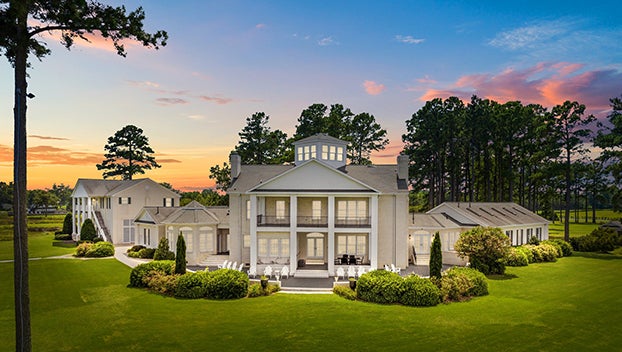Decorations go up for a centuries-old celebration
Published 9:00 pm Thursday, October 27, 2016

- FALL COLORS: Mums are the flower of choice for autumn. Here, multicolored mums create a fall counterpoint to the traditional Halloween decoration.
It started long, long ago — dressing in costume and decorating abodes for the fall harvest. Though much changed, the holiday has its origins in a pagan harvest festival, called Samhain, when the Celtic people paid homage to the harvest Gods. From bonfires to superstitions aimed at warding off evil, the festival has survived and evolved into a much different holiday: Halloween.
Take a stroll through any neighborhood this week, and what one sees is what most would assume is simple autumnal decorations, in yards and on porches. The primary colors are orange and black. Pumpkins, some carved into jack-o’-lanterns, sit on porch steps. Halloween decorations range from the ghoulish, such as skeletons and zombies, to the more innocuous, such as outlines of bats and stuffed witches that are far more cute than scary.
Each of these decorations, that most people assume are natural part of today’s Halloween can be traced back to the original Samhain festival.

ALL SAINTS DAY: Steeped in superstition, the Celtic people believed harvest time was a time when the dead awoke again. Today’s Halloween celebration is rooted in ancient practice and beliefs.
Jack-o’-lanterns
It was a time of deep superstition, where a good harvest meant the difference between life and death and the potential for evil lurked everywhere. People then believed that the souls of the dead could come back to life and warding off spirits with ill intentions became a part of the Samhain tradition. The living protected themselves from the return of the dead by making masks and costumes from animal skins and carving scary faces into large turnips and potatoes to be used as lanterns — the origins of both dressing in costume and jack-o’-lanterns. Later the tradition of carving vegetables for lanterns became part of Irish legend about a man named “Stingy Jack” who made a deal with the devil and ultimately lost. The legend became a part American tradition with a wave of immigration to America, where they found that instead of turnips, beets or potatoes, the American pumpkin was ideal for carving and lighting.
Christianity also had an impact on the holiday. Samhain became All Saints Day, and the tradition of going door to door started in poverty: on All Saints Day the needy would knock on the doors of the wealthy offering prayers for the recently deceased of the household. In return, they would receive a pastry.
Black and orange color schemes
Yellow, brown, red and orange are all considered fall colors, and in Halloween decorations, orange is predominant, symbolizing the harvest around which the pagan festival revolved, while black has long been associated with death.
Bats
Though they might seem scary to some, bats are generally harmless creatures that do humans a big favor in ridding the night of bugs — mosquitos, flies and more — that are quite a nuisance. Even bats’ presence among the Halloween lineup is associated with the original Celtic festival: celebrants hosted bonfires, lighting up the night sky. Bugs, attracted to the light of the fires, attracted legions of bats, which had their own feast of Samhain.
Harvest symbols
Hay bales, scarecrows, corn husks — all are representative of fall and the harvest that sparked a celebration that is still observed centuries later.
Regardless of origin, many Beaufort County residents embrace the holiday and decorate in what has become known as traditional fall or Halloween style, adding a touch of autumn and, unknown by many, a touch of the ancient to modern-day abodes.

WEBBED OUT: A large spider makes its web around the Pamlico House Bed and Breakfast’s sign. Spiders aren’t part of the pagan tradition that created modern Halloween, but their presence is always considered spooky.





